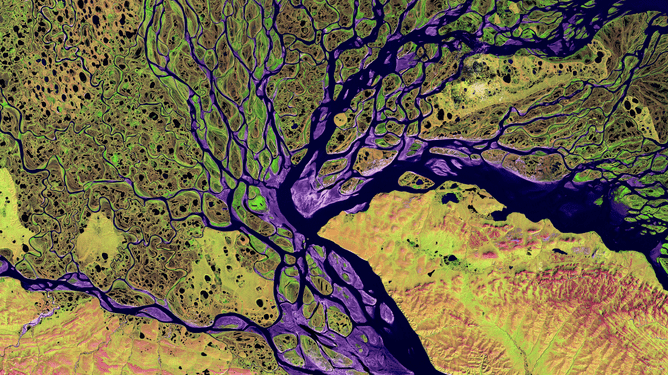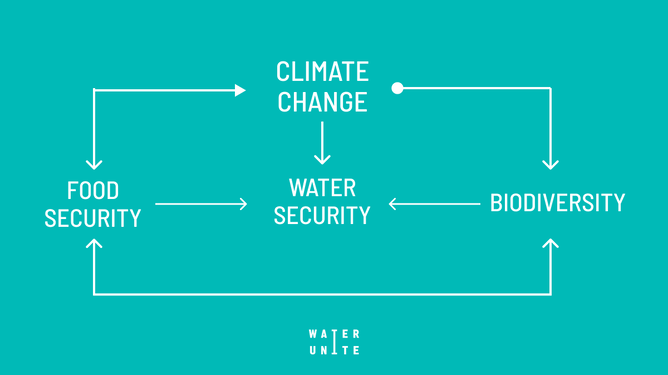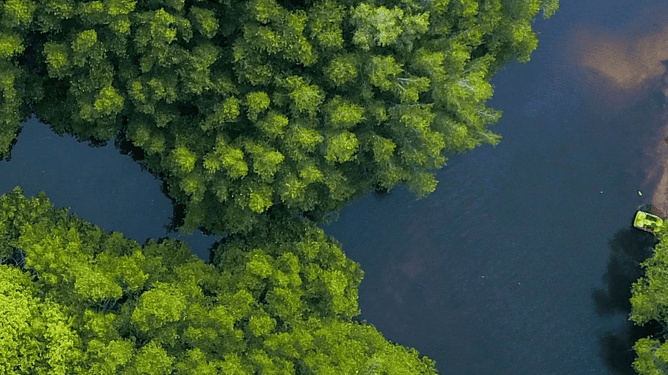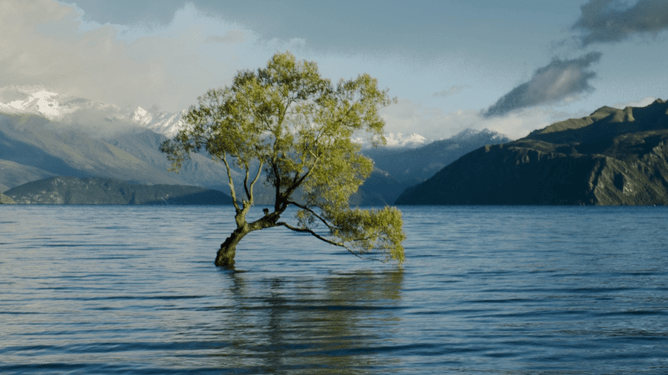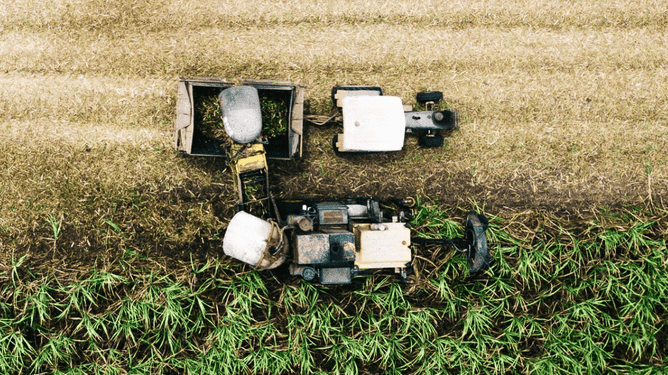Changes in climate have always driven changes in nature. Our planet has experienced five climate-driven mass extinctions which have caused 75-96% of species loss each. It is widely believed that we are in our sixth mass extinction but the first to have anthropogenic drivers. The climate shocks we have been experiencing such as floods, droughts, storms and wildfires have been growing in frequency and severity. These climate shocks have thrown us out of balance with nature and our nature-based services while causing long term damage to food security, water security and biodiversity. It’s certainly worth examining the nexus between biodiversity and food and water security and the interactions between them driven by climate change.
BIODIVERSITY
Much like us, flora and fauna are not supposed to exist in isolation. Plants and animals have roles in their respective ecosystems and interact with each other, informing bionetworks of interactions. A biodiverse environment, full of interactions, leads to a more productive ecosystem, providing a wealth of ecosystem services and co-benefits such as air regulation, water filtration and soil health.
The rate that we are losing species across the world is highly debated, some suggest 0.01-0.1% of species are lost every year but the number of species going extinct depends on the actual number of species present. 2 million species have been scientifically identified, meaning losses of 200-2000, yet other estimates indicate we coexist with 100 million species and most of which have not been identified, meaning losses of 10,000-100,000 of species per year (WWF 2020). However, we do know that “the drivers behind species loss are increasing” as stated by Braulio Dias, a previous Executive Secretary of the Convention of Biological Diversity, who cited climate change as one of the main drivers of this, alongside pollution and land conversion and degradation, the latter of which inspires biodiversity loss.
The interaction between climate and biodiversity is relatively simple; climate change leads to species loss through changing the environment. This can occur through climate shocks but also through changing weather conditions and precipitation patterns, rising temperatures and changing water levels alongside other conditions. This may cause species migration to more optimal conditions or risks extinction for those unable to adapt or move. Losing these species will create a less productive environment, reducing and diminishing ecosystem services and co-benefits.
Biodiversity secondarily impacts water security and food security as losing key species will reduce the impact of ecosystem services such as soil health and water filtration. On land, this will mean soils are not as fertile and may produce lower yields of crops. In the sea, this means pollution will not be filtered out as easily, giving rise to disease and infection.
This has consequences on food security for agriculture and aquaculture sectors. A loss in biodiversity gives the fishing sector less options for produce. As more fish become endangered, legislation will emerge protecting some of these species, preventing or limiting their harvest. But, this leaves the sector too reliant on too few species, exposing the sector’s vulnerability to reduced biodiversity.
Losing key floral species will also feed back into and catalyse the effect of climate change as fewer plants will be able to readily absorb and sequester carbon, giving rise to more atmospheric carbon and further raising global temperatures.
WATER SECURITY
Water insecurity is exacerbated by climate change. Water scarcity is heightened by droughts, floods and changing precipitation patterns which alter the water cycle. Climate change can also alter the flow of transboundary rivers and disrupt unprotected water sources, some of which may be relied on by local communities where centralised water access is not guaranteed or safe. (Conway 2023)
The physical infrastructure of the water sector is at risk from physical damage attributed to our changing climate and is in many cases not designed to withstand these new conditions (Climate Financial Advisors 2022). Funding for the water sector is a huge barrier to overcoming this issue and will remain an issue until we are able to breach the funding gap with global costs of achieving SDG 6 estimated to be as large as USD $1 trillion (Hutton 2022)
The water sector itself catalyses climate change through its surprisingly high carbon impact (Decker 2023). Around 10% of global greenhouse gases are produced by the water sector through storage, transportation, treatment and use (CDP 2020). Higher levels of greenhouse gases are of course linked to rising temperatures, diminishing natural water sources and causing harm to the water sector. Reducing the carbon impact of the sector is a pressing task and is vital in preventing this feedback loop.
Water insecurity also influences biodiversity. Depreciated water sources are linked to local species population decline and reduced biodiversity. At present, 1 in 3 freshwater species are at risk of extinction (WWF 2021).
Water security has a direct relationship with food security. Most directly, agricultural practices require a huge amount of water with both plants and livestock. In fact, 72% of all water withdrawals are for agricultural use (UN Water 2021). The more insecure water supplies are, the less water can be diverted for agricultural use. Some countries are tackling this issue by utilising recycled water for agricultural purposes in order to avoid using groundwater supplies (US EPA 2023).
Unprecedented climate shocks such as floods, storms, droughts and heavy rainfall can wash away topsoil, reducing the fertility of the land and reducing crop yields, destabilising food security and weakening global supply chains. If our current trajectory continues, the sector is predicted to see losses of up to $322 billion globally by 2050 (Dickie et al.2022).
FOOD SECURITY
Food security has direct impacts on climate change and biodiversity and if managed unsustainably, water security is also impacted indirectly. Yet, water security drives food security more significantly than food security might drive water security.
In terms of biodiversity, monoculture farming is detrimental. Such practices reduce food web interactions and isolate crops, ultimately reducing their diversity where they become more susceptible to disease and pests. Monoculture practices degrade soil health and affect pollination, harming future crop growth and diminishing yields and in some cases reducing the average growth of an individual plant.
Poor agricultural practices can affect biodiversity with climate change as a driving factor. Species lost through anthropogenic drivers such as land conversion, which alongside other unsustainable practices, can further accelerate climate change through the removal of adult trees, reducing an ecosystem’s ability to store carbon. What’s more is that this seems to come back around in a perpetuating cycle. This is a driver of climate change and some suggest that poor agricultural practices, alongside inefficient energy and water use, has significantly contributed to the sixth mass extinction that we find ourselves in (Begum 2021).
HOW WILL WE MITIGATE THESE IMPACTS
In summary, a holistic and sustainable approach is needed to mitigate these impacts that combines water management, biodiversity conservation, climate adaptation, and policy collaboration to mitigate food insecurity in the face of water scarcity, biodiversity loss, and climate change. Whilst we cannot control climate shocks, we can ensure we are channelling capital into the regions and sectors that are in climate crisis hot spots in order to mitigate long-term damage.
There is a clear nexus between climate change, food security, water security and biodiversity but this relationship does not necessarily extend in every direction, at least not to the same extent as driving change. Perhaps you might view this nexus as a disease. Biodiversity, food security and water security are the symptoms but climate change is the disease. Treating the symptoms is necessary but will it be enough to remedy the actual disease: climate change?
BIBLIOGRAPHY
Begum, T. (2021) What is mass extinction and are we facing a sixth one?, Natural History Museum. Available at: https://www.nhm.ac.uk/discover/what-is-mass-extinction-and-are-we-facing-a-sixth-one.html.
CDP (2020) Global water report 2020, CDP. Available at: https://www.cdp.net/en/research/global-reports/global-water-report-2020.
Climate Finance Advisors (2022) Climate Risk and Water Infrastructure. Available at: https://climatefinanceadvisors.com/wp-content/uploads/2021/05/Climate-Risk-and-Water-Infrastructure.pdf.
Conway, D. (2023) What is water security and how is it impacted by climate change?, Grantham Research Institute on climate change and the environment. Available at: https://www.lse.ac.uk/granthaminstitute/explainers/what-is-water-security-and-how-is-it-impacted-by-climate-change/#:~:text=The%20implications%20of%20climate%20change,%2C%20springs%20and%20surface%20water).
Decker, P. (2022) How the water sector can lead the way to net-zero, World Economic Forum. Available at: https://www.weforum.org/agenda/2022/03/water-sector-net-zero-decarbonization/.
Dickie, G. (2022) Floods, other water-related disasters could cost global economy $5.6 trillion by 2050, Reuters. Edited by K. Daigle and S. Fenton. Available at: https://www.reuters.com/business/environment/floods-other-water-related-disasters-could-cost-economy-56-trillion-by-2050-2022-08-29/.
GOV.UK (2023) Government to pay more to farmers who protect and enhance the environment GOV.UK. Available at: https://www.gov.uk/government/news/government-to-pay-more-to-farmers-who-protect-and-enhance-the-environment.
Hutton, G (2022) ‘Chapter 7: SDG 6 Global Financing Needs And Capacities To Ensure Access To Water and Sanitation For all’, Financing Investment in Water Security, Elsevier, doi.org/10.1016/B978-0-12-822847-0.00001-6.
Knight, R. (2012) Biodiversity loss: How accurate are the numbers?, BBC News. Available at: https://www.bbc.co.uk/news/magazine-17826898.
Stronen, A.V., Iacolina, L. and Ruiz-Gonzalez, A. (2019) ‘Rewilding and conservation genomics: How developments in (re)colonization ecology and genomics can offer mutual benefits for understanding contemporary evolution’, Global Ecology and Conservation, 17. doi:10.1016/j.gecco.2018.e00502.
US EPA (2023) United States Environmental Protection Agency. Reusing water for agricultural activities resources | Available at: https://www.epa.gov/waterreuse/reusing-water-agricultural-activities-resources.
WWF (2021) ‘One Third Of Freshwater Fish Threatened With Extinction, New Report Warns’. Available at: https://www.wwf.org.uk/press-release/one-third-freshwater-fish-may-face-extinction
WWF (2020) ‘How many species are we losing?’ WWF. Available at: https://wwf.panda.org/discover/our_focus/biodiversity/biodiversity/#:~:text=These%20experts%20calculate%20that%20between,2%2C000%20extinctions%20occur%20every%20year.
UN Water (2021) ‘Water Food and Energy’ United Nations Water. Available at: https://www.unwater.org/water-facts/water-food-and-energy
Author: Charlotte Macdonald
Editors: Louis Goring-Morris, Bryan Cortright

